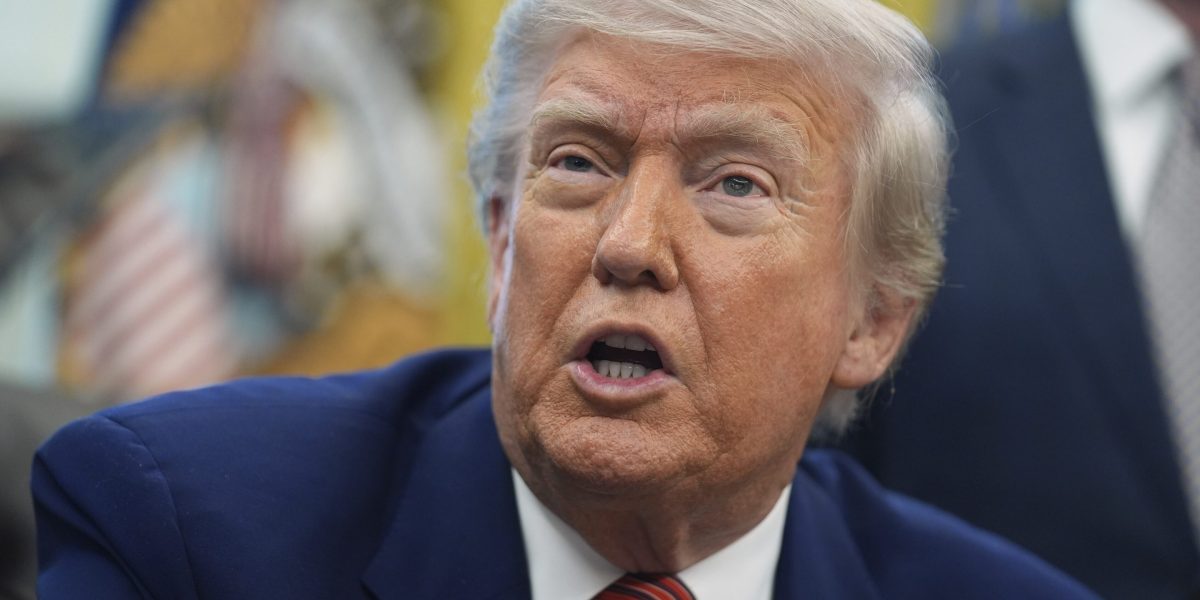Physical Address
304 North Cardinal St.
Dorchester Center, MA 02124
Physical Address
304 North Cardinal St.
Dorchester Center, MA 02124


Washington (AP) – a small known Federal Courtthrown a giant monkey wrenchTo a basic part of President Donald Trump’s economy by striking the majority of the flowing tariffs he had since obtained office.
The court of international trade, based in New York, on Wednesday said Trump was ovalept over his authority in Canada, Mexico, Mexico, China, and over 50 other countries.
So what is the international trade court? And how does it use such power?
CIT is a specialty federal court commonly regarded as disputes of customs duties and trade restrictions. It developed from an 1890 entity called the Board of General Appraiser, and renamed the Customs Court in 1926.
Usually SIN has cases of more technical rare as high profile as this case. It in charge of trade-related disputes from around the country.
Nine judges were sitting in court, and most of its cases were delivered by only one of the judges. But three judges consider the challenge of trump tariffs, which often occurs when a case involves a Procombamation, or an Execution Promamation, or a wide prementist, “the court says,” The court sayswebsite.
The three judges in this case were Gary Katzman, president Barack Obama appointed; Timothy refrigerator, Taught by Trump; And Jane Restani, appointed by President Ronald Reagan.
Its decisions can appeal to the Court of Appeals for the Federal Circuit and then in the Supreme Court. The Trump administration says it will file an appeal, and the appeal court on Thursday said the duties remain in place while it is considered the case.
Karoline Leavitt, White House Press Secretary, which is strictly criticizing the decision, saying that members of the Three-Judgle Panel “abused President Trump’s authority” and added that the courts “should have no paper here.”
Leavitt said the presidential tariff policies “legal sounds and is based on common sense.”
However many traders and legal experts say at least parts of the CIT rule is likely to stand under examination.
Edward Allden, a senior council with foreign relations, says the decision of 10% universal trump tariffs, as well as he called Trump tariffs in more than 50 countries, likely to prevent appeal. Because, as the CAS means, duties are intended to counteract trade deficiencies with United States countries.
Although Congress specifically says that duties to answer trade invites should be applied under a different law, Ieepa is not. That law allows a maximum of 15% tariff up to 150 days.
“I think it’s a voice because there is no way around reason,” said Alden, “Congress controls the tariffs and congresses clearly the authority” to a separate law.
Trump said his duties of Canada, Mexico, and some of the Chinese tariffs in response to countries that were insisted on illegal drugs and unauthorized immigration. It is possible that other judges can find that the President has the authority to inflict the tariffs under IEEEEDA, said Alden.
Other analysts say that about rule is likely to continue, too.
“The court said what everyone knows – with no reasonable basis that these tariffs are related to Fendanyl,” Professor of Law and Co-Director New York School School, said.
More mostly, “The President cannot afford to account for emergency power to claim for himself what the Constitution gave to Congress,” he added.
Some of Trump’s duties – those in iron, aluminum, and cars – remain places because they rely on different laws not challenged. Many economists say that Trump would re-give most of his tariffs under a variety of laws that allow Tarko, even if in a legal process that may take several months.
This story originally shown Fortune.com